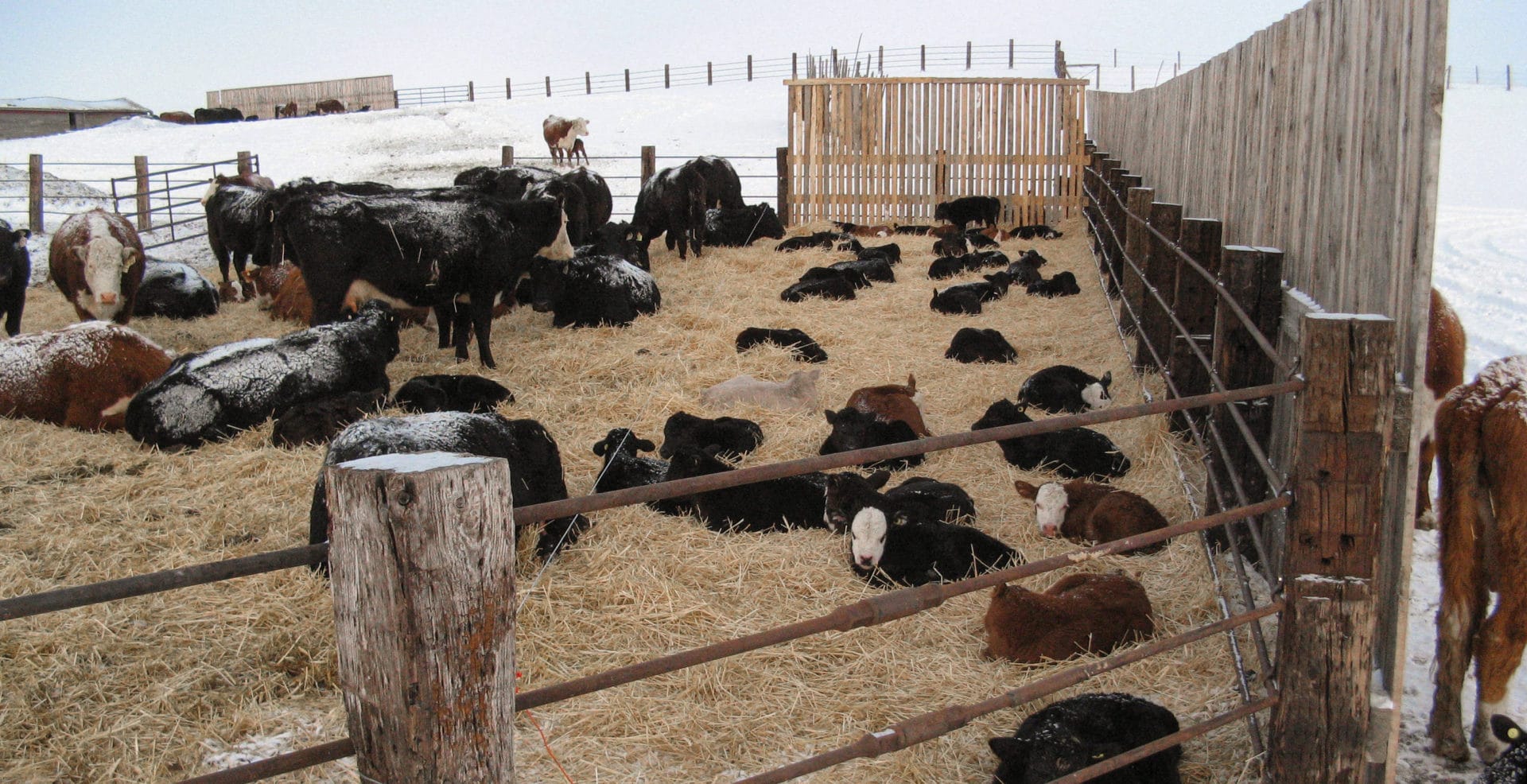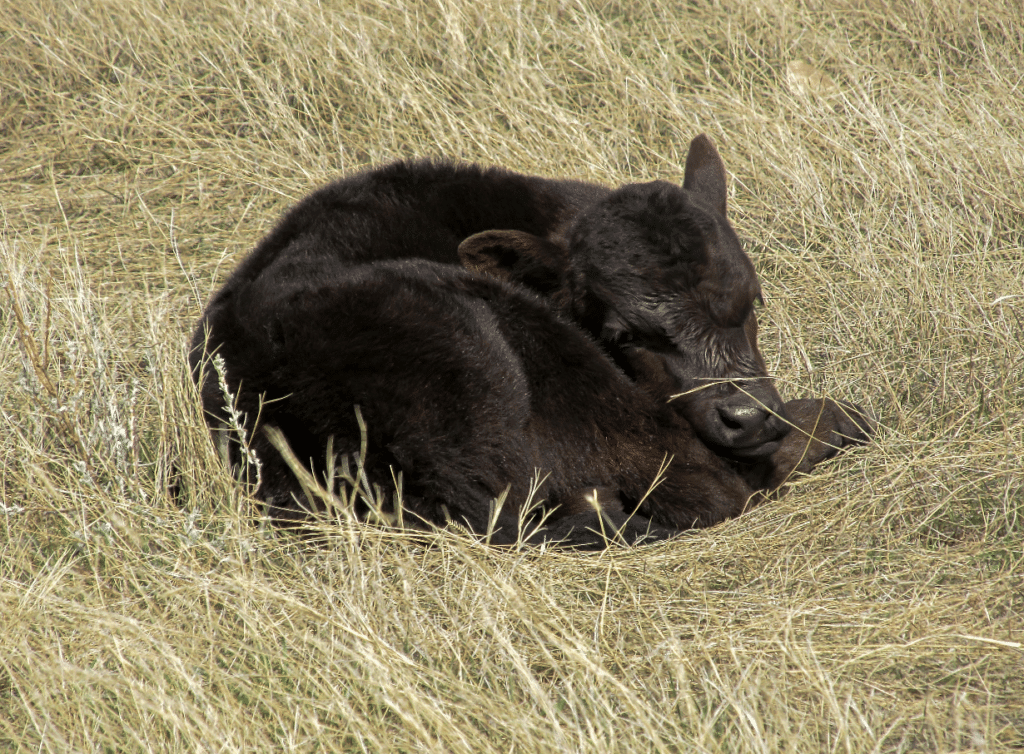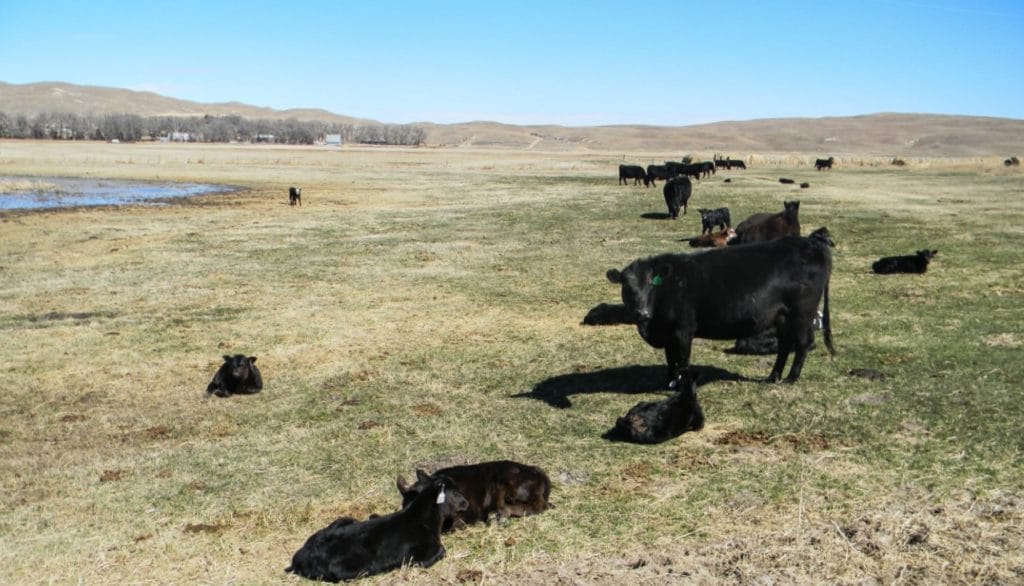Last updated on October 5th, 2023 at 01:58 pm
It’s hard to wash up when you don’t have opposable thumbs.
But the basics of halting the spread of disease that we’ve learned during the COVID-19 crisis—social distancing and sanitation—apply in the calving pasture every bit as much as in the coffee shop.
And when it comes to calving time, applying a few management and nutritional fixes can cut the incidence of one of the worst headaches and challenges you and your calves can encounter—scours.
This is not to suggest that you help your cows overcome the disadvantage of being thumbless by washing them several times a day. But applying the basic idea behind mitigating the spread of the coronavirus to the bacteria, viruses and microscopic parasites that cause scours has its merits.

The Scours “Hit”
Although most cases occur at less than a month of age, the majority of scours cases happen within the first 16 days of life. And scours can have a pretty big hit on your bottom line.
It’s costing you time, it’s costing you labor, it’s costing you money on medicine, and it’s costing you gain on the calves. If they’re sick early in life, they’re just not going to perform to their genetic potential as they get older.
That’s because of the damage the pathogens cause in the intestinal tract. They’re causing the intestinal lining cells to stop working properly and even sometimes just killing them. Usually when that happens, it’s to the point where the human eye can see the diarrhea, and the treatment starts.
But here’s the thing. Not always is that treatment going to work.
Because at this point, that calf has to stop, pay attention, and start to rebuild that intestinal lining and try to get it back to how it’s supposed to be. And when we say you’re going to have a negative impact on the way that calf converts feed and gains pounds later, this is why: the intestinal tract is never going to be built back the way it’s supposed to be. Once it’s destroyed, it will try and repair itself a little bit, but it will never be 100 percent again.
When the pathogen load overwhelms a susceptible calf, it may lose its desire to nurse, which results in loss of water and electrolytes, resulting in dehydration. With a calf being 70 percent water at birth, prevention is key and treatment should be swift. Calves may be depressed, too weak to stand and if left untreated, death may occur within 24 hours.
The pathogens that cause calf scours are present in just about every cow herd, according to David Smith, DVM. Now an infectious disease expert at the College of Veterinary Medicine at Mississippi State University, Smith developed the Sandhills Calving System while at the University of Nebraska.

Given that the pathogens are already present when calving season starts, your best bet is to create an environment that discourages them to spread. That’s accomplished through the nutritional health of the cow and not overcrowding the calving pasture.
Cow Nutrition
Mineral supplementation is often overlooked as a scours preventative, but the effect that minerals have on creating a robust immune response in both the cow and calf is paramount. If the cow is on an adequate plane of nutrition, including minerals, she’ll pass those minerals and vitamins to the calf through the placenta.
Then, when the calf is born, it’s in a nutritional state to better utilize the passive immunity it gets from the colostrum and in better shape to begin developing its own immune response. That’s why it’s so important that the calf get up and suck right away and the cow be in a body condition sufficient enough to allow her to produce high-quality colostrum.
It’s best to put cows and heifers on a good, sound mineral program at least 90 days prior to calving. For some operations, calving has already begun, so if you’re not on a mineral program, consider starting. Year-round mineral supplementation has many benefits throughout the calf and cow’s life.
Some operations have moved to calving later in the spring, after green-up. If you’re calving later and aren’t on a mineral program, now’s the time to start.
And keep an extra sharp lookout when you’re checking heifers. Calves born to first-calf heifers tend to be more susceptible to scours than calves born to mature cows, Smith says. Heifers produce a lower volume and quality of colostrum, may have poor mothering ability, and are more susceptible to calving difficulty.
Sandhills Calving System
In fact, social distancing and sanitation are the basics of the Sandhills Calving System, created as a way to fight scours and other calfhood diseases. Explained simply, cows go into the first calving pasture when calves begin arriving and stay there for around 2 weeks.
Then the cows that haven’t calved are moved to a new pasture, leaving the pairs behind. After a week, cows that haven’t calved are moved to the third pasture, leaving the pairs behind in pasture 2. That process is repeated every week until all the calves are on the ground.
By moving cows to a new pasture each week, calves are born in a “clean” environment, free from any pathogens the older calves may shed. Pairs from different pastures can be put together after the youngest calf is four weeks old. By a month of age, calves are at much less risk for developing scours.
The Sandhills system is venue-driven, requiring pastures big enough to handle each group of cows without damaging the grass or soil. This may be difficult for some operations and a modified system may be better.
In the modified system, pairs are moved every 10 days or when around 100 calves have been born. This cuts the number of cow groups and pastures needed.
Written by Burt Rutherford, Former Chief Editor of BEEF Magazine



